Based on current CME prices, it is likely that October will see another significant increase in cheese prices.
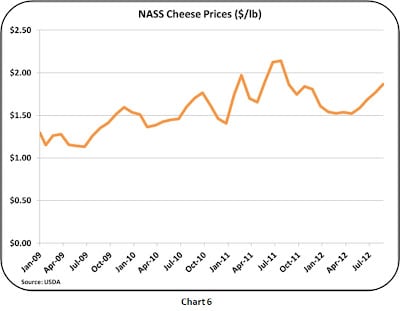
The NASS cheese price for September was $1.86/lb, an increase of $0.10 from the prior month.
That is certainly not a high, but the early October prices on the CME are approaching record highs, with cheese blocks reaching $2.09/lb.
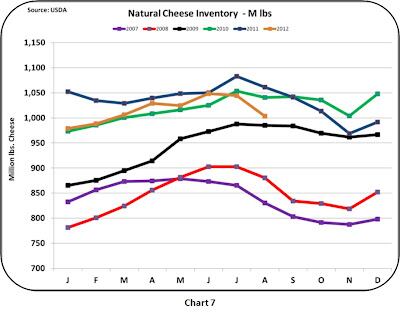
The NASS prices typically follow the CME prices with about a two week lag.
Based on current CME prices, it is likely that October will see another significant increase in cheese prices.
Inventories of cheese fell at the end of September as charts 7 & 8 show graphically.
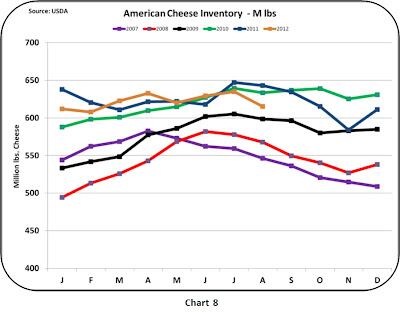
The tighter inventories will also be contributing to increased prices in October.
Unfortunately export data for August and September is not yet available.
The export data through July shows record levels of exports.
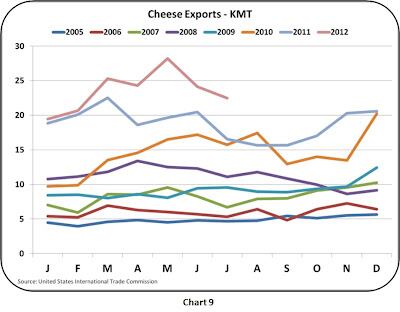
With a weakening of the USD in August and September exports should be even higher than in the last reporting month of July.
The near term future for cheese prices is very positive. However, higher retail cheese prices are a concern because they will cause a future drop in demand.
Butter
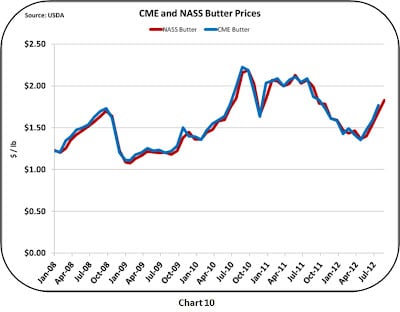
Butter prices for September were $1.83/lb, an increase of $.13 over the prior month.
October prices on the CME are currently $1.91.lb, so barring underlying changes, the butter price for October will probably show another increase.
Exports are the drivers of this increased demand. The very high levels of exports in 2008, caused inventories to be very low and prices shot up as a result.
Spikes in exports can again cause inventory depletion and high prices.
Butter production shown in Chart 11 keeps increasing but can't seem to keep up with demand.
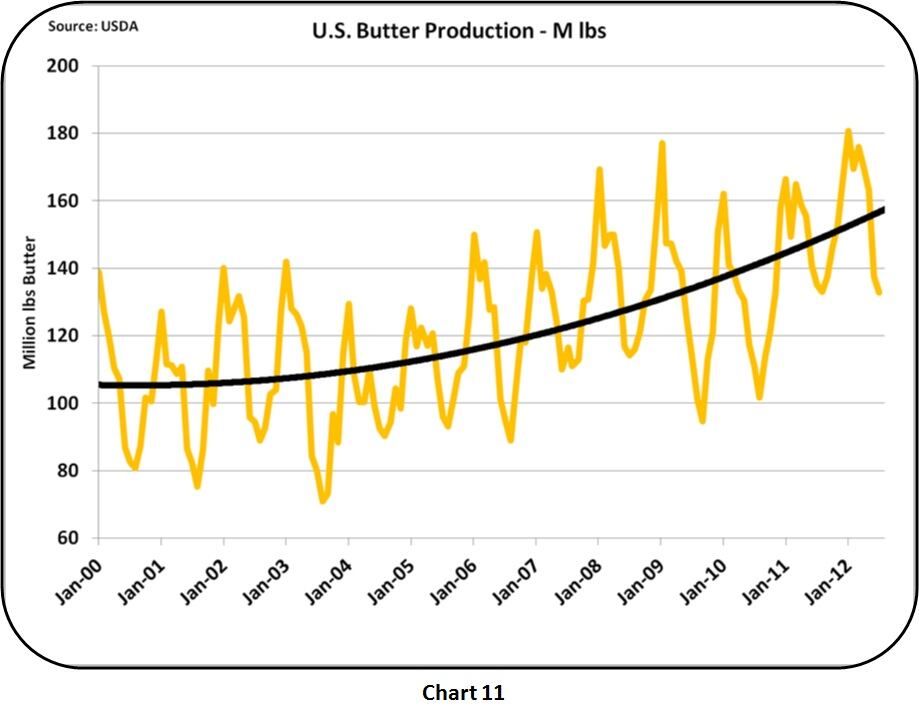
As a result, butter inventories shown in Chart 12 are continuing to tighten.
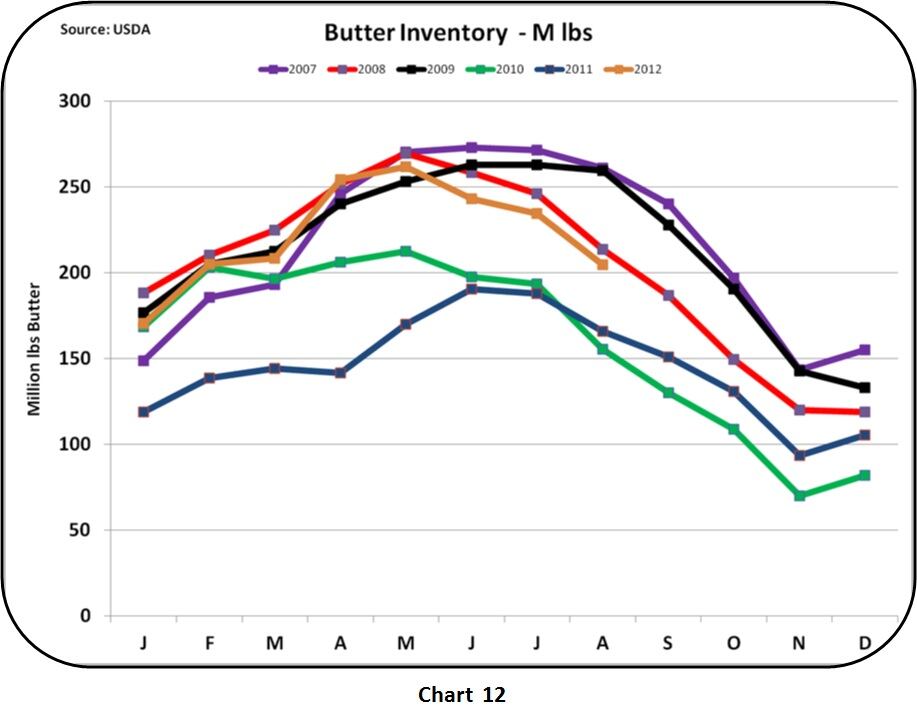
The very high levels of exports in 2008, caused inventories to be very low and prices shot up as a result.Exports are the drivers of this increased demand.
Spikes in exports can again cause inventory depletion and high prices.
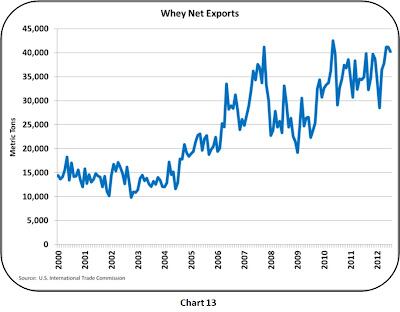
Other solids
Whey inventories have been declining for 5 years putting upward pressure on the price of dry whey.
The 15% increase was driven by the price for dry whey which was up 9%. Whey exports remain high as shown in Chart 13.
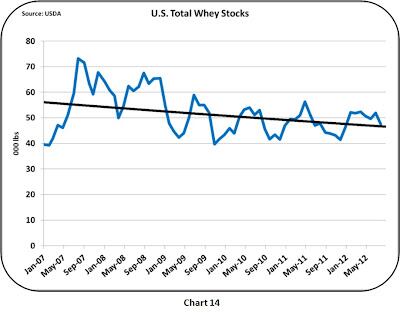
The price for other solids increased more than any other milk component.
As a result, the value of other solids has increased to a respectable $0.40/lb.
The future
Exchange rates are favorable for exports. Inventories of cheese, butter, and dry whey are low and the CME prices for all dairy products are increasing.
The current high feed prices will probably keep producer margins positive but not excessive. It certainly looks like milk component prices will show additional increases in October.

When prices reached $20/cwt previously, there was a significant increase in the number of cows which contributed to oversupply and very low prices the next year.
While higher feed prices are not positive for the producer, they should have the impact of keeping cow numbers within reason.
You can see John's month-to-month dairy commodity breakdowns at his blog, MilkPrice.
